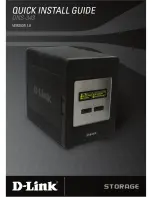
19
CH A P T E R
2
Fault Isolation Methodology
The R/Evolution storage system provides many ways to isolate faults within the
system. This chapter presents the basic methodology used to locate faults and the
associated FRUs.
The basic fault isolation steps are:
■
Gather fault information
■
Determine where in the system the fault is occurring
■
Review event logs
■
If required, isolate the fault to a data path component
Gather Fault Information
When a fault occurs, it is important to gather as much information as possible.
Doing so will help you determine the correct action needed to remedy the fault.
Begin by reviewing the reported fault. Is the fault related to an internal data path or
an external data path? Is the fault related to a hardware component such as a drive
module, controller module, or power-and-cooling module? By isolating the fault to
one of the components within the storage system, you will be able to determine the
necessary action more rapidly.
Determine Where the Fault Is Occurring
Once you have an understanding of the reported fault, review the enclosure LEDs.
The enclosure LEDs are designed to alert users of any system faults and might be
what alerted the user to a fault in the first place.
When a fault occurs, the status LEDs on an enclosure’s right ear (see Figure 3-1)
illuminate. Check the LEDs on the back of the enclosure to narrow the fault to a
FRU, connection, or both. The LEDs also help you identify the location of a FRU
reporting a fault.
Summary of Contents for 2000 Series
Page 1: ...2000 Series Troubleshooting Guide P N 83 00004287 12 Revision A May 2008 ...
Page 18: ...18 R Evolution 2000 Series Troubleshooting Guide May 2008 ...
Page 34: ...34 R Evolution 2000 Series Troubleshooting Guide May 2008 ...
Page 64: ...64 R Evolution 2000 Series Troubleshooting Guide May 2008 ...
Page 78: ...78 R Evolution 2000 Series Troubleshooting Guide May 2008 ...
















































